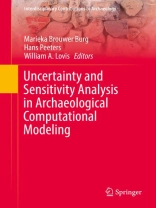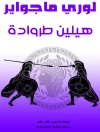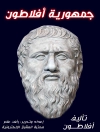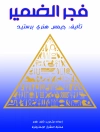This volume deals with the pressing issue of uncertainty in archaeological modeling. Detecting where and when uncertainty is introduced to the modeling process is critical, as are strategies for minimizing, reconciling, or accommodating such uncertainty. Included chapters provide unique perspectives on uncertainty in archaeological modeling, ranging in both theoretical and methodological orientation. The strengths and weaknesses of various identification and mitigation techniques are discussed, in particular sensitivity analysis. The chapters demonstrate that for archaeological modeling purposes, there is no quick fix for uncertainty; indeed, each archaeological model requires intensive consideration of uncertainty and specific applications for calibration and validation. As very few such techniques have been problematized in a systematic manner or published in the archaeological literature, this volume aims to provide guidance and direction to other modelers in the field by distilling some basic principles for model testing derived from insight gathered in the case studies presented. Additionally, model applications and their attendant uncertainties are presented from distinct spatio-temporal contexts and will appeal to a broad range of archaeological modelers. This volume will also be of interest to non-modeling archaeologists, as consideration of uncertainty when interpreting the archaeological record is also a vital concern for the development of non-formal (or implicit) models of human behavior in the past.
Daftar Isi
Preface.- Chapter 1:Introduction (
Marieka Brouwer Burg, J.H.M. Peeters, and William A. Lovis).- Chapter 2: Is There a Research Design Role for Sensitivity Analysis (SA) in Archaeological Modeling? (
William A. Lovis).- Chapter 3: Epistemic Considerations About Uncertainty and Model Selection in Computational Archaeology: A Case Study on Exploratory Modeling (
J.H.M.
Peeters and Jan-Willem Romeijn).- Chapter 4: GIS-Based Modeling of Archaeological Dynamics (GMAD): Weaknesses, Strengths, and the Utility of Sensitivity Analysis (
Marieka Brouwer Burg).- Chapter 5: Assessing Nonlinear Behaviors in an Agent Based Model (
Jon W. Carroll).- Chapter 6: Scale Dependency in Agent-Based Modeling: How Many Time Steps? How Many Simulations? How Many Agents? (
Joshua Watts).- Chapter 7: The Sensitivity of Demographic Characteristics to the Strength of the Population Stabilizing Mechanism in a Model Hunter-Gatherer System(
Andrew A. White).- Chapter 8: Archaeological Simulation and the Testing Paradigm (
Thomas G. Whitley).- Chapter 9: “Uncertainties” (
Sander van der Leeuw).
Tentang Penulis
Marieka Brouwer Burg (Ph.D. 2011 Michigan State University) is Lecturer of Anthropology in the Department of Anthropology at the University of New Hampshire, New Hampshire, USA. She is interested in the effects of landscape evolution and climate change on human communities, as well as reconstructing decision processes and perceptions of landscape in the past. She uses GIS-based archaeological computational modeling to explore these processes in both Old and New World contexts. Her current research focuses on investigating the spatiotemporal dimensions of ancient Maya mobility and socioeconomic interactions in the central Belize River Valley, Belize.
J.H.M. Peeters (Ph.D. 2007 University of Amsterdam) is Associate Professor of Prehistoric Archaeology at the Groningen Institute of Archaeology, University of Groningen. Research interests include Hunter-Gatherer Archaeology and Ethnography; Landscape Archaeology; Lithic Technology; Computational Modeling; Site Formation Dynamics and Fractal Geometry. Current research projects include Late Glacial and Holocene Hunter-Gatherer Landscape Use of the North Sea Basin; Mesolithic Lithic Technology; Hunter-Gatherer Pyro-Technology; Dynamics of Intra-Site Spatial Patterning.
William A. Lovis (Ph.D. 1973 Michigan State University) is Professor and Curator of Anthropology in the Department of Anthropology and MSU Museum at Michigan State University, Michigan, USA. His research interests include Hunter-Gatherer Archaeology and Ethnography; The Transition to Horticulture; Applied Theory, Analytic Methods and Research Design; Human-Environment Interactions and Regional Taphonomy; Paleoenvironmental Change; Public Policy including Forensic Archaeology, Law Enforcement Training, and Repatriation; Great Lakes/Midwest and Europe. Current research projects include archaeological site taphonomy and preservation in the Lake Michigan coastal dunes, Mesolithic regional settlement and mobility in Yorkshire, northern England, and hemispheric climate impacts on Great Lakes coastal dune evolution and activation cycling.












